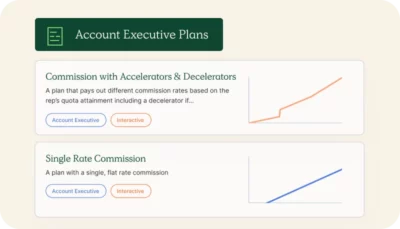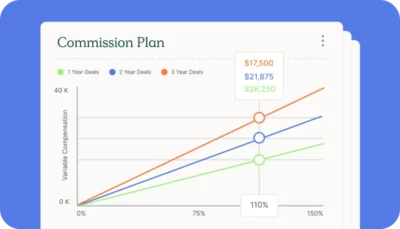Google “grow at all costs” and you’ll see the following headlines:
- “Growth at all costs? Not anymore!” — Fast Company
- “Growth at All Costs is Perilous — This is How to Scale Sales Sustainably” — First Round Capital
- “Is The Pendulum Swinging Too Far? From Growth At All Costs To No Growth” — Forbes
This topic has (and continues) to dominate business media outlets.
That’s because interest rates remain steady and tech investors are only sending cash to companies with a path to profitability. This marked a pretty spectacular pivot from 2020 and 2021 when companies earned their valuations based on how fast they could grow and inflated valuations followed.
“To me, ‘grow at all costs’ meant looking the other way on how you’re achieving growth,” QuotaPath VP of Finance Ryan Macia said. “Inefficient customer acquisition cost (CAC) and undesirable gross margins didn’t matter as long as you’re growing.”
Ryan Macia | QuotaPath VP of Finance
Now, investors are most attracted to businesses with the lowest amount of risk. Instead of business and market potential, investors and executives want to see movement on up-funnel metrics like CAC, customer lifetime value (LTV), and gross revenue retention (GRR).
— which led to mass layoffs across tech.
Meta let go of 10,000 employees as part of their “Year of Efficiency” restructuring. Google laid off 12,000 and Amazon 18,000. Plus, thousands of smaller tech startups contributed to the 160,000-plus tech layoffs since the start of 2023.
That’s one way to build efficiency, although it’s not favorable.
Another way is to align your sales compensation strategy with up-funnel metrics so that your entire go-to-market team focuses their efforts on the most important areas of your business.
To address how to solve for CAC, LTV, gross margin and more using sales compensation levers, read on.
Ready to automate sales compensation?
See how QuotaPath can automate commission calculations for your organization.
Start a 14-Day TrialHow to solve for CAC
First, what is CAC? Customer acquisition cost (CAC) is the total cost incurred by a business to acquire a new customer. It measures efficiency, profitability, and growth potential with high CAC indicating that a company is spending too much money. Low CAC, on the other hand, often indicates that a company is efficient at acquiring new customers, which can lead to higher profits.
CAC is calculated by dividing the total cost of acquiring customers by the number of new customers acquired.
Marketing costs, think paid search, and sales costs, such as the cost of sales commissions, play a factor in CAC.
To reduce CAC, companies will often focus on a target audience or their ideal customer profile (ICP). These accounts are most likely to buy and benefit from your product and services and by focusing on those most likely to buy, you lower your CAC. Marketing teams will also evaluate their marketing channels to make sure they are using the most effective routes to get in front of their buyers.
These efforts typically lead to improvements in profitability and make it easier for the business to grow.
So, how can you use sales compensation to drive down CAC?
A healthy LTV to CAC ratio is 3:1
That means the estimated customer lifetime value (LTV), or the amount of money the average customer will contribute to a company over their entire lifecycle, should be 3x that of the cost of acquiring the customer.
Increase commission rates on your ICP deals:
If your standard commission rate pays 10% on deals, consider bumping it to 12% for all accounts that fall under your ICP.
Your ICPs often have technologies in place that easily integrate with your solution and come from industries where you’ve already experienced success. For this reason, the sales cycle typically takes less time, as do the resources necessary to get the customer up and running in your solution.
By aligning with Marketing to direct their dollars to ICP accounts and incentivizing your reps to focus on ICPs, you’ll lower the CAC as a result.
Just make sure the rate adjustment is enough to change the selling behaviors. If it’s too small of a bump, your reps won’t see the value and might focus attention on larger deals that may be harmful to your business in the long term.

Award a bonus or higher commission rate on non-discounted deals:
Sales teams are often quick to offer discounts, sometimes before a prospect even bocks at the price.
Discounts are tricky because data has shown that although the discount helps get the deal through the door and build urgency, they often yield long-term ramifications that can crush profitability, retention, and CAC.
“Customers who came in through discounts had: 1. A lower willingness to pay and higher price sensitivity, 2. Churned at a much higher rate than the core group, and 3. Had dramatically lower lifetime value than the core group. As you can see in the table below, the average difference in lifetime value was upwards of 32.41% less.”
Price Intelligently
To help change this behavior, you could offer a SPIF or bonus anytime your rep sells a full-price deal. For example, you could pay an extra $100 bonus to the rep for every deal that closes without a discount.
Reversely, you could also implement a decelerator, or lower commission rate, on any discounted deals. In practice, this might look like paying 8% on a deal that’s discounted versus the standard rate of 10%.
How to solve for gross margin:
Next up is gross margin, a metric that indicates if the company makes a good profit on each sale versus a small or even negative profit.
Gross margin is calculated by dividing the company’s gross profit by its net sales. It measures how much money a company makes from each sale after paying for the costs of goods sold (COGS).
For example, if a company has net sales of $100,000, and the cost of goods sold is $50,000, its gross profit would be $50,000 and its gross margin would be 50%.
A high gross margin is usually considered a sign of profitability because it means the company earns a good profit on every sale.
To incentivize deals with higher gross margins, consider the following compensation levers:
Decelerators on deals that threaten gross margin
Not every deal is a good one.
Your reps and leadership should recognize when a deal is solid versus one that will require significant uplift to pull to the finish line and onboard.
ICP accounts, for example, will almost always require the least amount of effort to stand up.
To discourage your reps from spending time and resources on deals that threaten gross margin, pay a decelerated rate or lower commission rate on none ICP deals.
So, for ICP accounts you could pay 10 or 12%, and on non-ICP deals, you could pay 7 to 8%.

Commission with Accelerators & Decelerators
Learn MorePay accelerators on the most profitable lines of services and products
If your organization has diversified streams of revenue after adding more profitable services or product streams, you need to update your compensation plans to support these.
Pay accelerated rates, or multipliers, on your most profitable lines of services and products.
For example, Mallorie Maranda, VP of Sales at WorkRamp, recently added a professional services quota that their team must hit and a comp strategy to match. Immediately after implementing these changes, the reps started selling more.
“That was a big win for us,” Mallorie said.
While professional services count as nonrecurring revenue, they are highly profitable and increase the chances of renewals and time to value.
How to solve LTV:
Last up is lifetime value.
Customer lifetime value (LTV) measures the average revenue generated by a customer over the course of their relationship with a business. We track this metric because it informs Sales, Marketing, and Product development decisions like how much to spend, where to improve the product, and what to prioritize to bolster customer retention.
To calculate LTV, follow this formula:
Customer lifetime value = customer value x average customer lifespan
You could also multiply the average revenue per user by the average customer lifespan and then divide it by the customer acquisition cost.
One thing to remember is that LTV differs from your customer acquisition cost. While CAC shows you how much your business spends to acquire a new customer within a specific time frame, LTV shows you what happens after a customer starts working with you. Plus, LCV can show you whether your CAC is too high for the current payoff.
So, to drive LTV using sales compensation tactics, some things you can do include:
Compensate on the highest onboarding NPS scores
Those who are happiest in the product see the most value. The sooner they realize the value, the more likely they are to spend more and renew, which increases your LTV.
To help your customers reach the time to value faster, encourage your customer success teams to deliver exceptional onboarding experiences by offering bonuses to the reps who earn the highest NPS scores.
So, for every perfect onboarding score, reward the rep with $100 or $200.

Increase your commission rates on upsells
You should also consider increasing your commission rates on upsell or expansion opportunities.
Historically, upsell rates are less than the commission rate for new business. But we’d argue that LTV is more important than net new, and so it should be treated as such.
If your standard commission rate on new business is 10%, you could increase that to 13% for expansion.
Additionally, if your reps hand off accounts to an account manager or customer success managers after the deal closes, you could still give the rep some credit for the account’s expansion.
Examples:
- Expansions count for 50% quota credit and pay out half the commissions
- Or you could have a diminishing value:
- within 60 days = 100% quota/commission
- 60-180 days = 50% quota/commission
- 180+ days = 0% quota/commission
Incentivize multi-year deals and renewals
Another way to lock in higher LTVs from the jump is to build multi-year deal accelerators into your compensation plan.

Sales Comp Plan Example in Compensation Hub with a multi-year accelerator
Learn MoreMulti-year contracts are your biggest ticket to predictable revenue and supporting LTV. To adjust your compensation strategy, start one-year deals at a 10% commission rate, then increase to 12% for two years and maybe even jump to 17% for three years.
You could do the same for multi-year renewals too. If your account managers earn 7% on annual renewals, bump that to 10% anytime they re-sign a multi-year contract.
Bonus on early renewals
Equally as important as the other tactics are incentivizing early renewals.
You’re improving LTV by locking a customer in earlier and improving retention because those most likely to renew early are also most likely to renew again.
To encourage your account managers or customer success teams to ask for early renewals, offer a bonus or SPIF. For example, you could reward $150 for renewals that close 90 days ahead of schedule and $100 for those 60 days in advance.
If you want to improve business efficiency metrics, like CAC, gross margin, and LTV, you can do so in a number of ways, including your compensation strategy.
Before fully baking these tactics into your compensation plans, we highly recommend that you test each one as a SPIF first to see the impact on selling behaviors. No need to make waves with comp adjustments if the future addition doesn’t inspire actual change.
For sales commission best practices, commission structure for account managers, and our free sales commission calculator, visit Resources. Also, if you’d like to learn more about QuotaPath’s sales incentive compensation platform, book time with our team by scheduling a demo.
